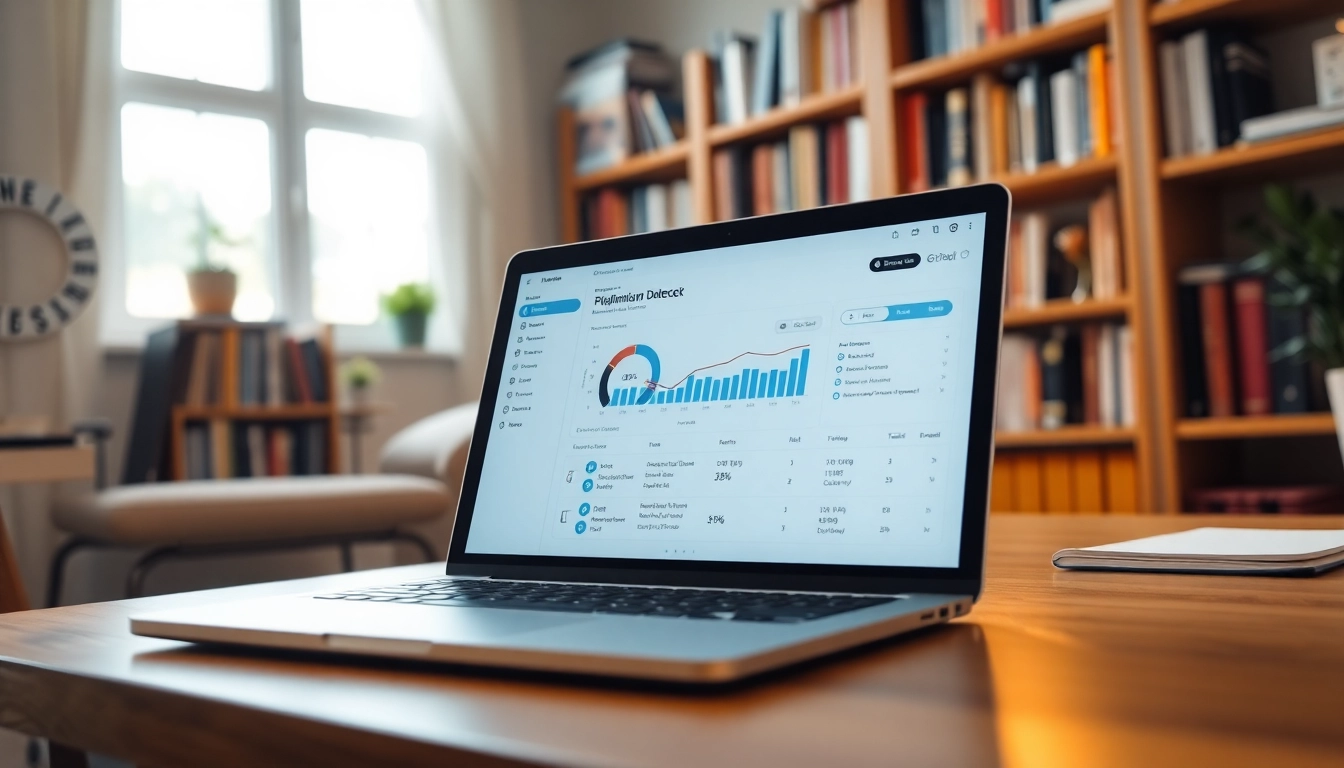Introduction to Plagiarism Detectors
In the world of academia and content creation, maintaining originality is paramount. With a plethora of information available online, ensuring that your work is free from plagiarism has become increasingly crucial. A plagiarism detector serves as an essential tool that helps identify copied content, enabling writers, students, and professionals alike to uphold integrity in their work. This article takes an extensive look at plagiarism detectors, exploring their importance, evolution, functionality, and the best practices to adopt in order to avoid plagiarism.
What is a plagiarism detector?
A plagiarism detector is a software tool or online service that checks pieces of written content against databases of existing material to find similarities or exact matches. They are designed to help users identify and rectify instances of unintentional plagiarism in academic papers, reports, articles, and other types of written work. By inputting the document into the software, it compares the text with millions of web pages, articles, books, and academic publications to highlight sections that may require citations or paraphrasing.
Importance of using a plagiarism detector
The ramifications of plagiarism can be severe, affecting academic results and professional reputation. By employing a plagiarism detector, individuals not only safeguard their work against copyright infringement but also learn to develop their writing skills. These tools help highlight areas where users may have inadvertently copied text, therefore serving as invaluable learning aids. Institutions, therefore, encourage the use of plagiarism detectors to foster originality and academic integrity among students.
How plagiarism detection has evolved
Over the years, plagiarism detection technology has made significant strides. Early models focused on simple string matching techniques, which often overlooked variations in text. Today, sophisticated algorithms analyze contextual similarities and paraphrasing, making it harder for copied content to evade detection. Developments in artificial intelligence (AI) and machine learning have further enhanced the accuracy of these tools, allowing for a nuanced understanding of text matching that accounts for semantic meaning.
How Plagiarism Detectors Work
Scanning methods of plagiarism detectors
Plagiarism detectors utilize various scanning methods to identify similarities in text. The two primary methods include:
- String Matching: This traditional method searches for exact phrases and sentences, flagging them as potential plagiarism. It is effective but may miss paraphrased content.
- Semantic Analysis: More advanced detectors employ semantic analysis, which examines the meaning of the text and can identify paraphrased ideas. This method uses natural language processing (NLP) to understand context, providing a deeper level of analysis.
Algorithm variations among popular tools
Different plagiarism detection tools employ varying algorithms, which can yield differing results. For instance, tools like Turnitin use extensive databases of academic publications, while others like Grammarly prioritize web content. Understanding the underlying technology behind these tools is vital for selecting the right one based on your specific requirements. Some tools focus on detecting style and structure similarities, while others emphasize strict word-for-word matching.
Limitations of current detection technologies
Despite advancements, plagiarism detectors have limitations. False positives can occur, where original content is incorrectly marked as plagiarized due to common phrases or technical jargon. Additionally, document types, such as images or PDFs, may not be compatible with all detectors, limiting their scope. Certain sophisticated forms of plagiarism, such as mosaic plagiarism, which intersperses sourced material with original thoughts, can also evade detection. Thus, while these tools are highly beneficial, they should be used in conjunction with personal diligence and awareness.
Choosing the Right Plagiarism Detector
Comparing features and functionalities
With a multitude of plagiarism detection tools available in the market, choosing the right one can be daunting. Here are some essential features to look out for:
- Database Size: A larger database usually translates to better accuracy. Prominent tools align with vast academic databases to ensure comprehensive detection.
- Report Detail: Some tools provide extensive reports detailing percentage match, sources found, and suggestions for improvement, while others offer basic matching information.
- User Interface: A user-friendly interface improves the experience, allowing users to navigate functionalities efficiently.
- Integration: The ability to integrate with other writing tools or platforms enhances usability and streamlines workflows.
Cost considerations for students and professionals
Cost is an important consideration when selecting a plagiarism detector. Many tools offer free services with basic functionality, which is suitable for students with limited budgets. However, professionals may require advanced features that often come with premium subscriptions, which vary in price. Analyzing these costs against the expected value can guide users toward selecting an option that meets their needs without excessive expenditure.
Advantages of using free versus premium tools
There are distinct advantages and disadvantages to both free and premium plagiarism detection tools. Free tools, such as those found on educational websites, can be sufficient for casual use or short documents. However, they often lack the thoroughness and advanced features of premium options, such as unlimited scanning, in-depth reports, and access to extensive databases. Premium tools might prove advantageous for extensive academic writing and professional content creation but come at a monetary cost. Ultimately, the choice hinges on individual or institutional needs and their specific use cases.
Best Practices for Avoiding Plagiarism
Effective research and note-taking strategies
To maintain originality in writing, effective research and note-taking strategies are paramount. Approaches such as summarizing sources in your own words and maintaining a clear distinction between paraphrased material and direct quotes can significantly reduce unintentional plagiarism. Additionally, tools such as citation management software help students keep track of references and ensure proper citation formats, which further diminishes the risk of plagiarism.
Citation and referencing guidelines
Being well-versed in citation guidelines relevant to academic writing is essential for anyone engaging in research. Different fields adhere to distinct formatting styles, such as APA, MLA, or Chicago, and knowing these nuances fosters a better understanding of how to cite sources properly. Within citations, clarity and accuracy are critical. Incorrectly formatted references can lead to the perception of plagiarism, even when proper attribution is intended. Maintaining a detailed list of cited works is vital as it encourages thoroughness and accountability in content creation.
Using paraphrasing tools ethically
While paraphrasing tools can help in crafting original text, their use should be approached with caution. Ethical paraphrasing involves not just rewording content but also ensuring that the original ideas are accurately represented. Proper citation is still necessary when drawing on another’s work, regardless of the rewording. Thus, while paraphrasing tools can aid in generating fresh content, users must remain diligent in maintaining originality and proper attribution.
The Future of Plagiarism Detection
Emerging technologies in plagiarism detection
The field of plagiarism detection is rapidly evolving with advancements in technology. The integration of blockchain technology to create immutable proof of original authorship is one such emerging trend. Additionally, the use of AI will continue to enhance semantic analysis capabilities, making it increasingly difficult for plagiarized content to escape detection. Future tools may incorporate advanced algorithms that adapt to writing styles, offering personalized assessments for individual users.
The role of AI in enhancing detection accuracy
Artificial intelligence is set to play a crucial role in improving the accuracy of plagiarism detection. Machine learning algorithms will continue to become more sophisticated, allowing them to recognize and analyze complex patterns in text. These systems will be able to learn from prior interactions, thereby enhancing their ability to detect subtle forms of plagiarism that are often missed by traditional methods. Furthermore, AI’s capacity to understand context will help differentiate between common phrases and duplicated ideas, significantly improving detection accuracy.
Academic policy changes regarding plagiarism
As the landscape of plagiarism detection changes, so too must academic policies. Educational institutions are increasingly recognizing the need for a more comprehensive approach to academic integrity. Many are employing the use of sophisticated detection tools in conjunction with educational programs focused on citation practices and the importance of originality. This multifaceted effort is expected to cultivate a culture of integrity, with initiatives aimed at both prevention and detection as standards for academic success.



